One of the “rules”* about photography is each image should tell a story. After Machu Picchu, I spent an additional three days in Cusco and took over 500 photos. Culling them to my usual ten for this post: impossible! Instead, I share 24 photos, each of them helping to tell the story of this UNESCO World Heritage Site.
Around the corner from my hotel is an intersection where, at the corner, this mural resides.
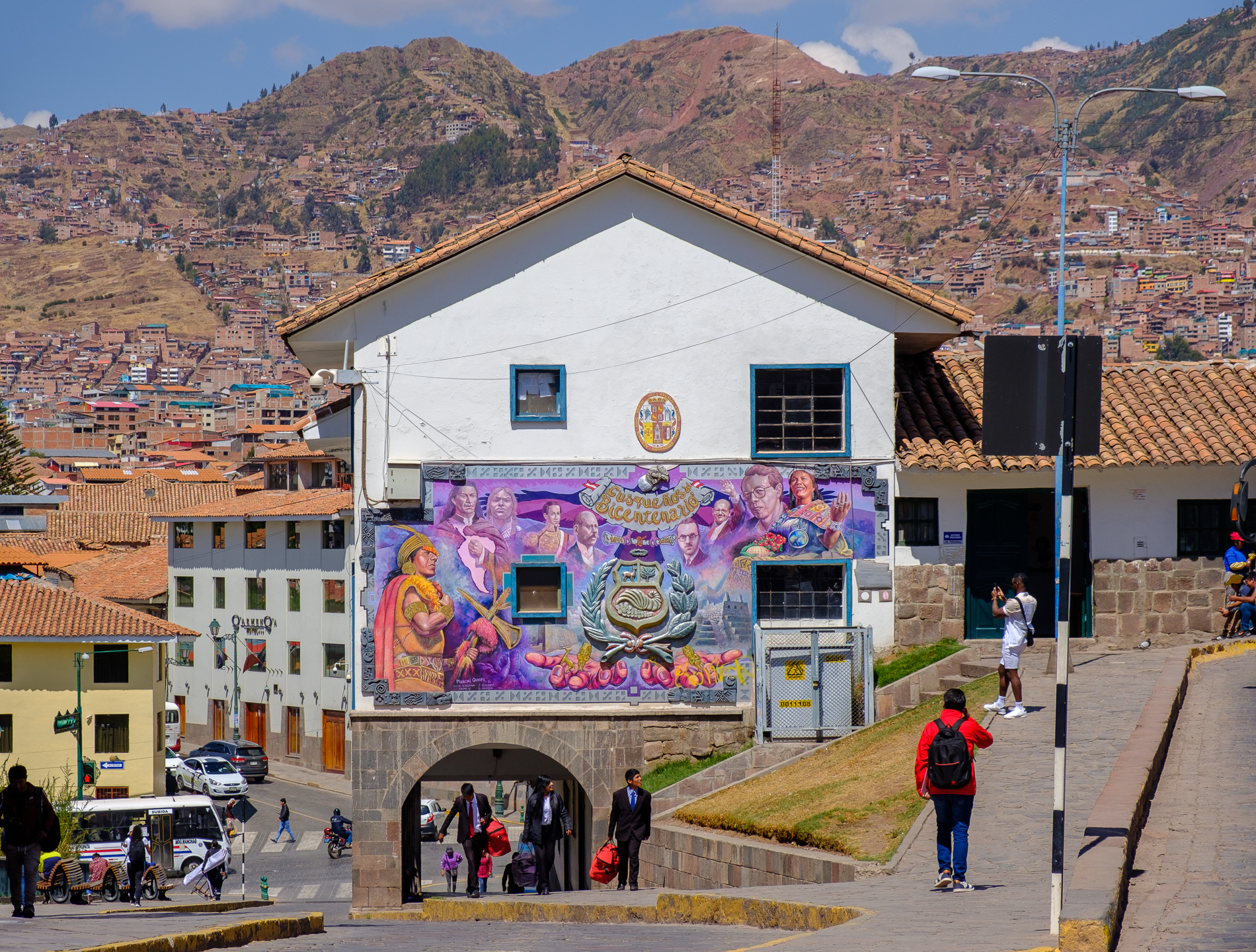
Wanting to walk and reflect on the Monday of Yom Kippur, Katy (our CEO Extraordinaire!) suggested I explore the art district of San Blas. Here, I found this terrific sculpture.
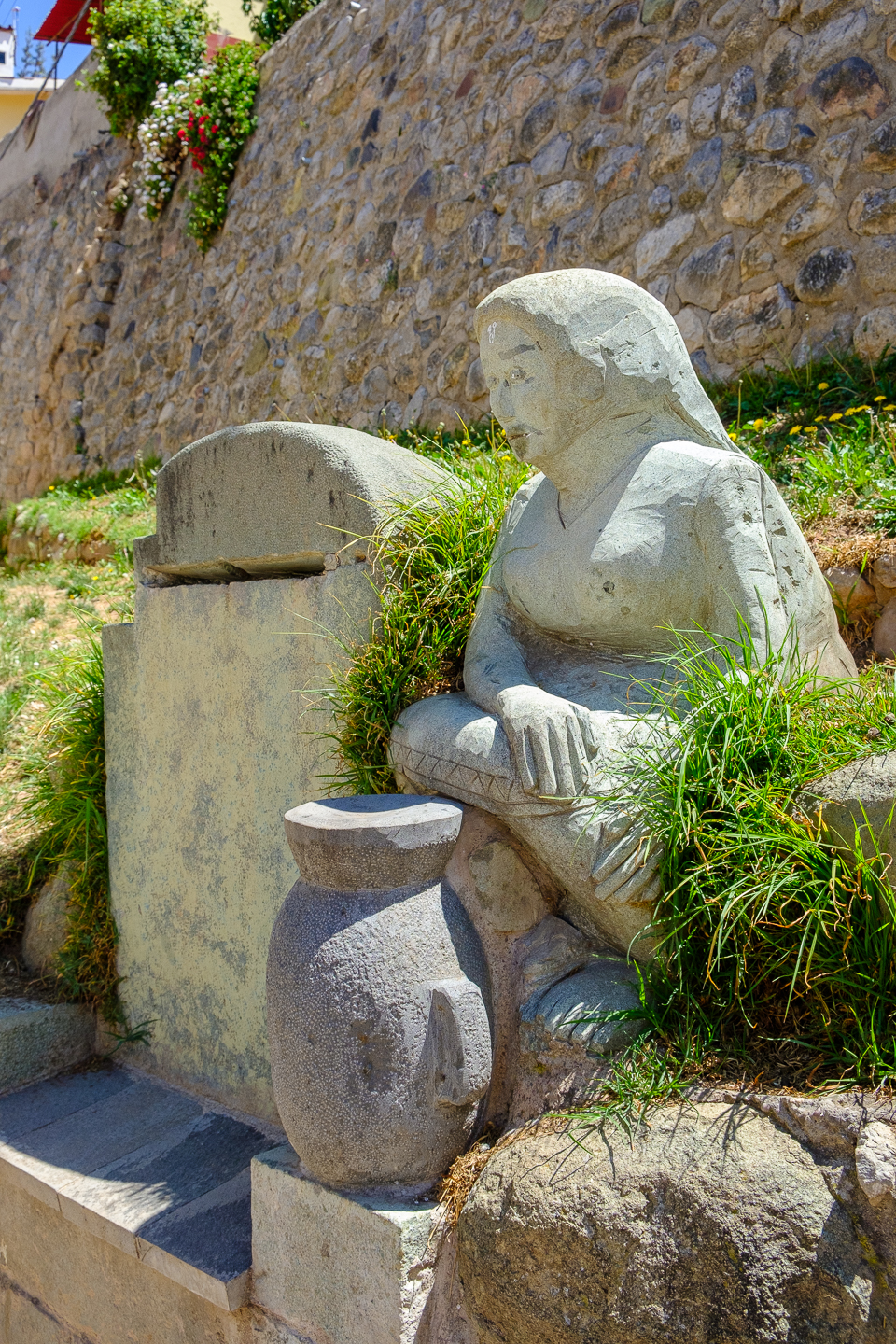
Many doors are painted my favorite color. Katy said they’re a carry-over from when Palestinians lived in the neighborhood and painted their doors blue.

This mural in the San Blas district shows the beautiful with the practical.
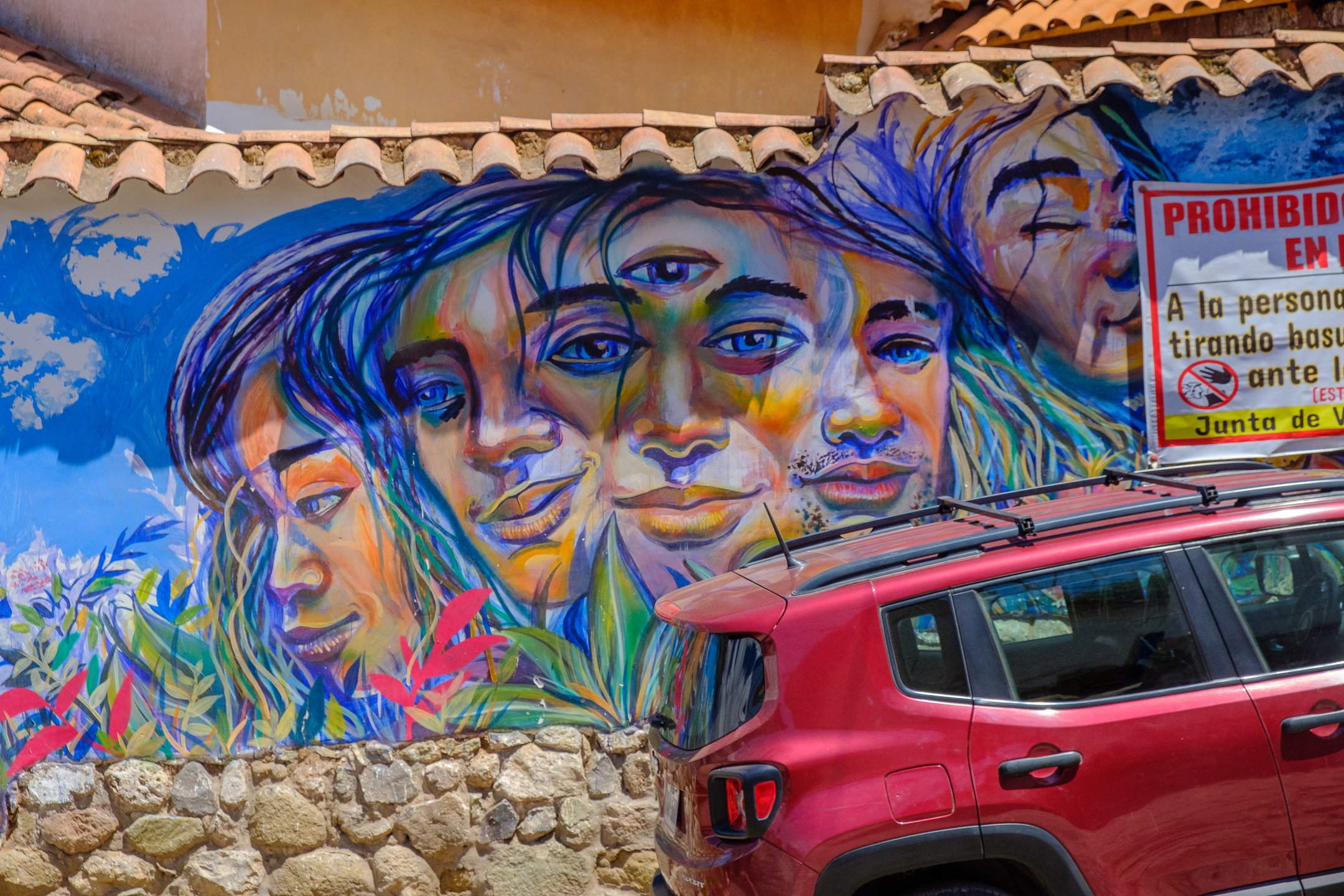
In the San Cristobal neighborhood, this building joins two staircases.
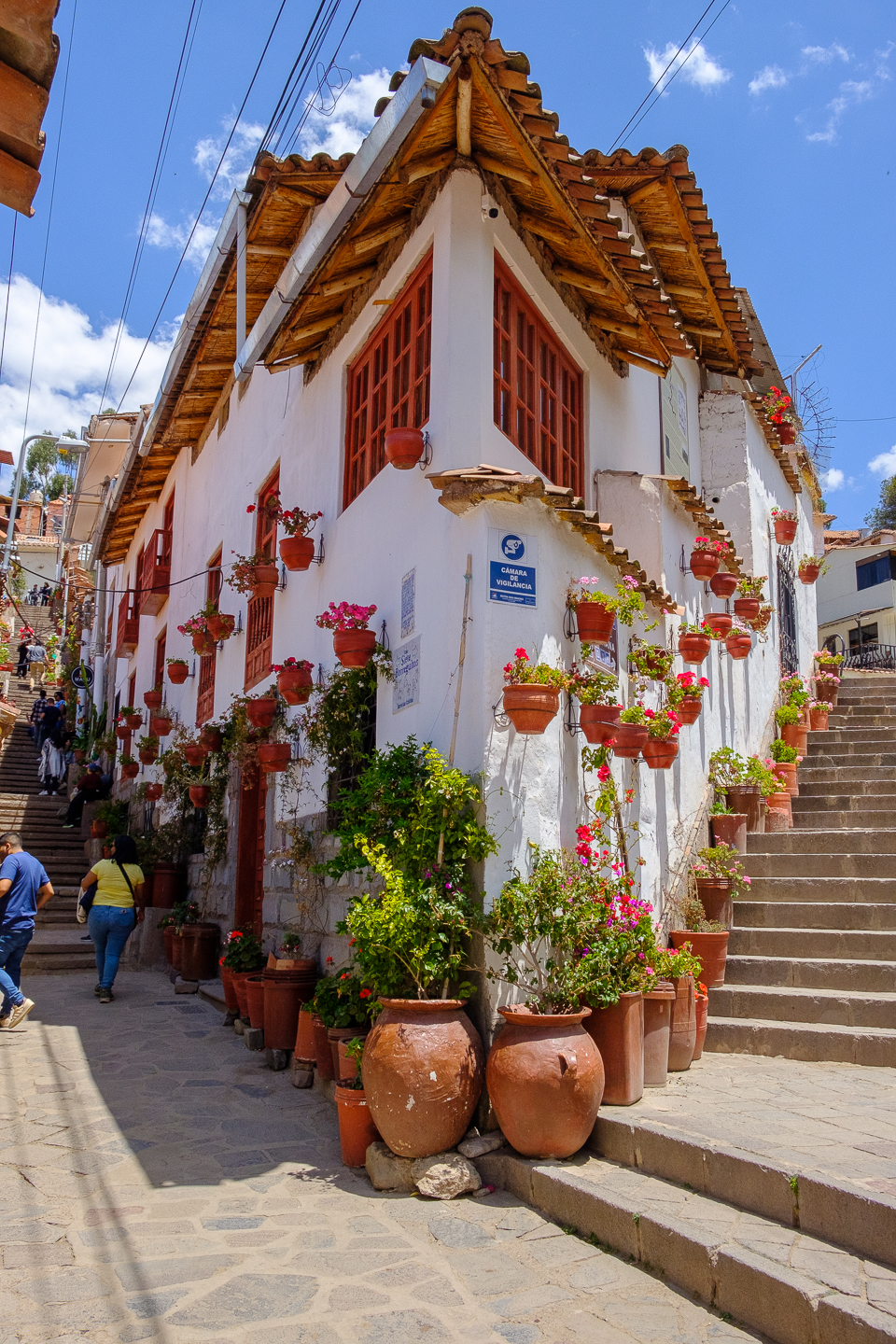
A young woman, surrounded by arches, taking a break.
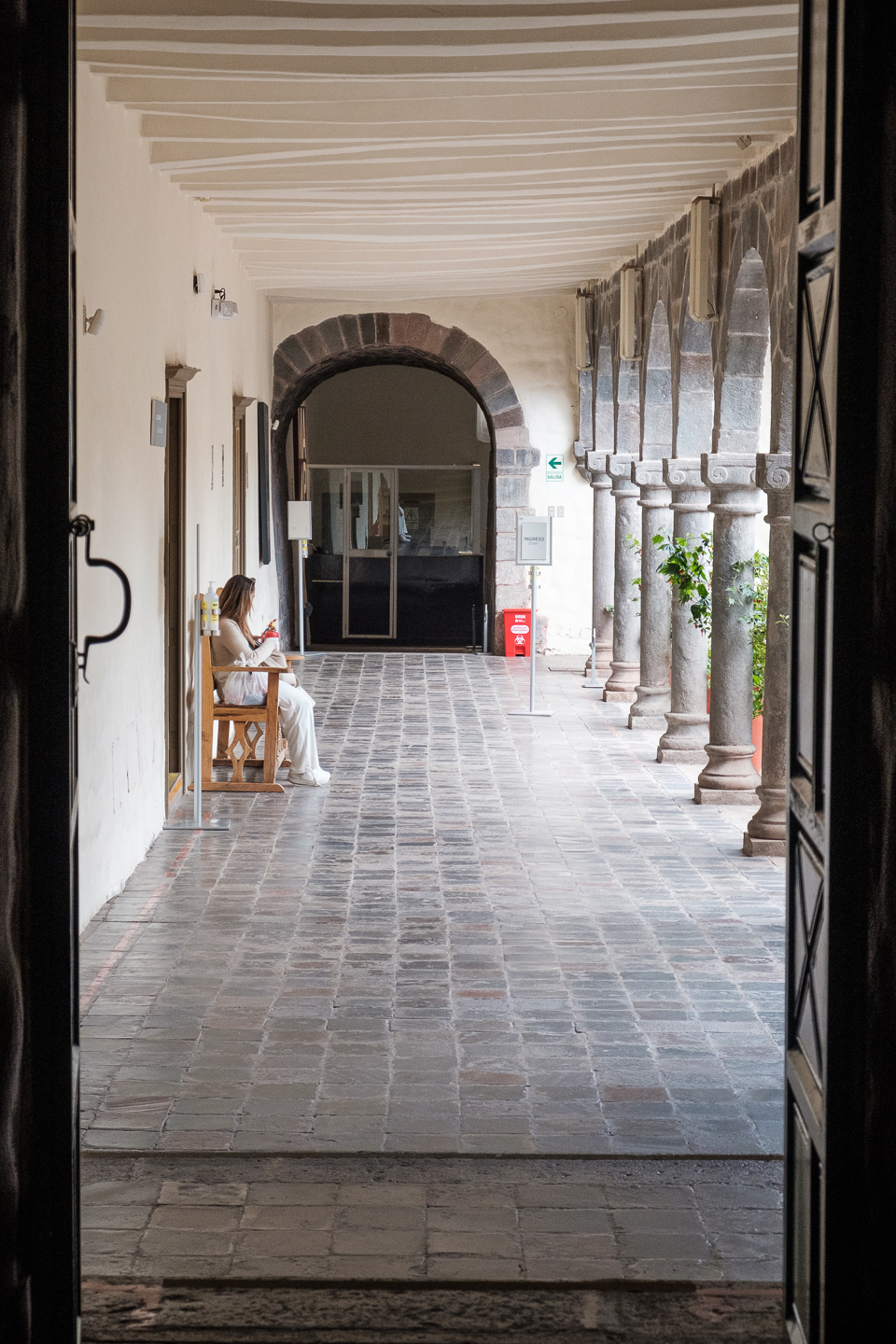
All over Cusco are women, dressed in traditional garb, toting alpacas and charging visitors for photos.
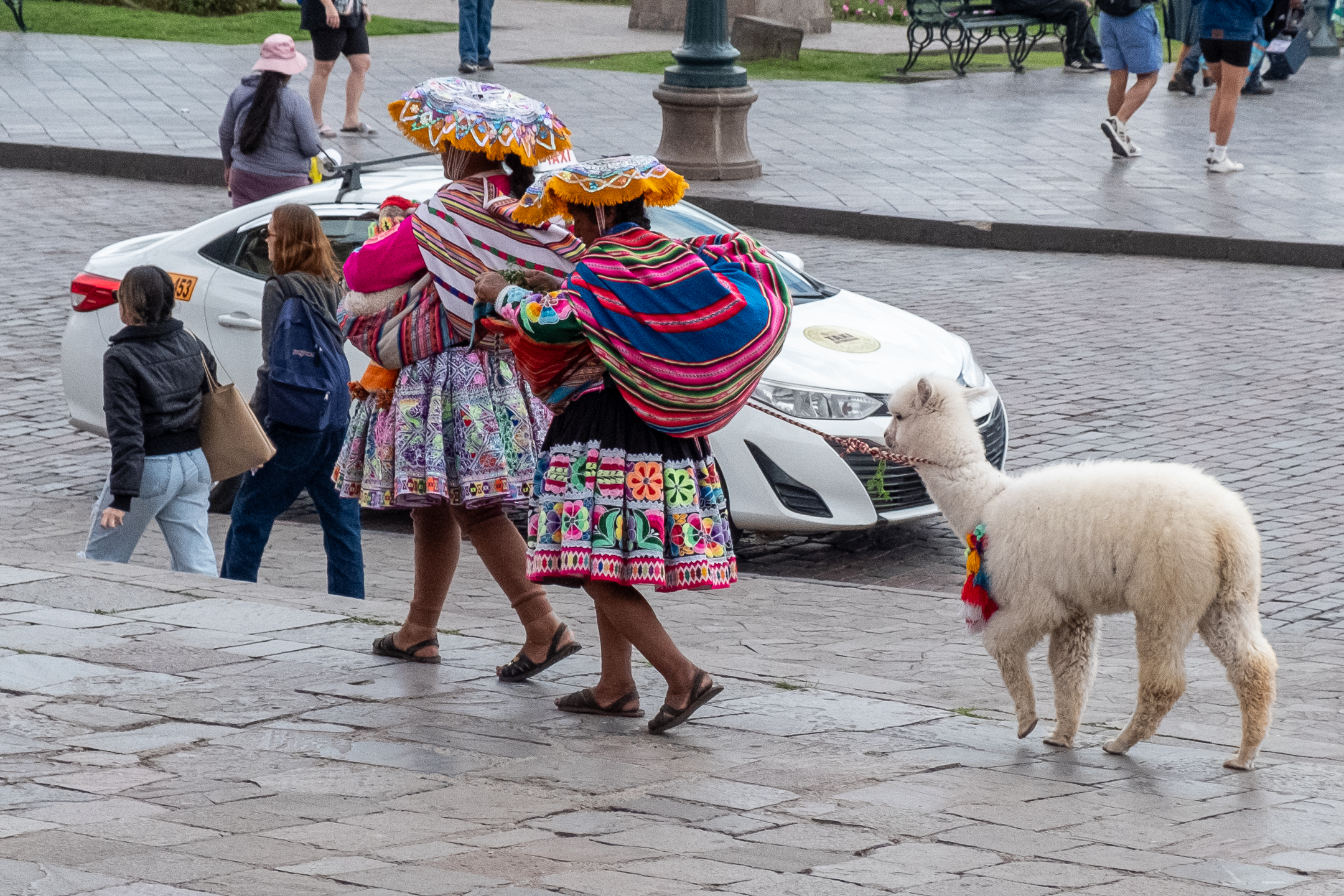
The next morning, I headed to San Pedro Market, a traditional marketplace, to buy some gifts, souvenirs, and an additional bag to carry items. Since I usually travel with a daypack and a carry-on, I often have no room for additional items!

In the Inca Museum, a display demonstrates how mummies are placed in the fetal position to be ready for their rebirth.

I love the mural in our hotel’s courtyard!
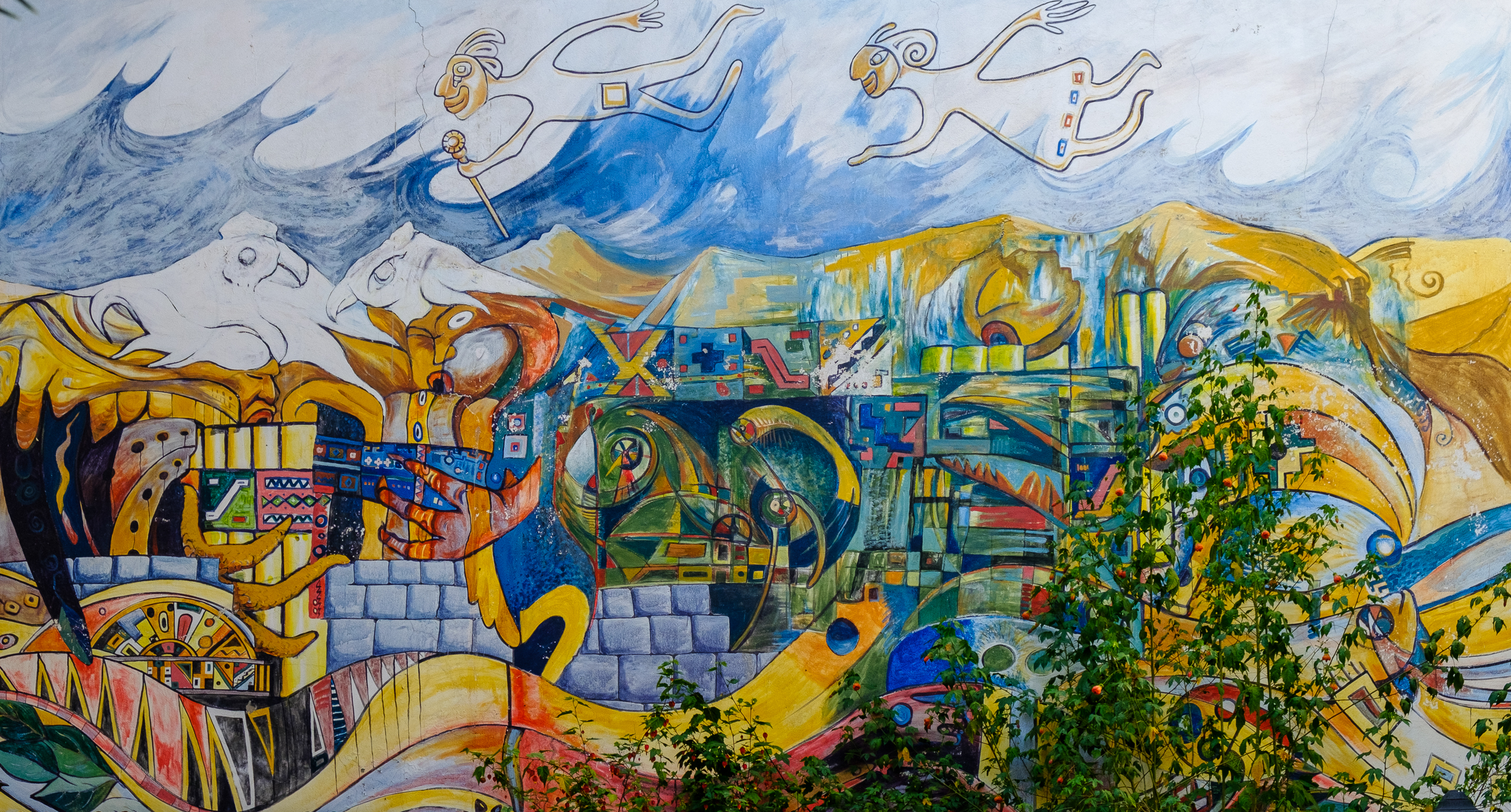
It’s hard work keeping the gardens fresh in the Plaza de Armas.

The day after my photography tour and lesson, I wandered around practicing “street photography.” This mama, with her toddler on her back, taking her son to school is like moms in many places!
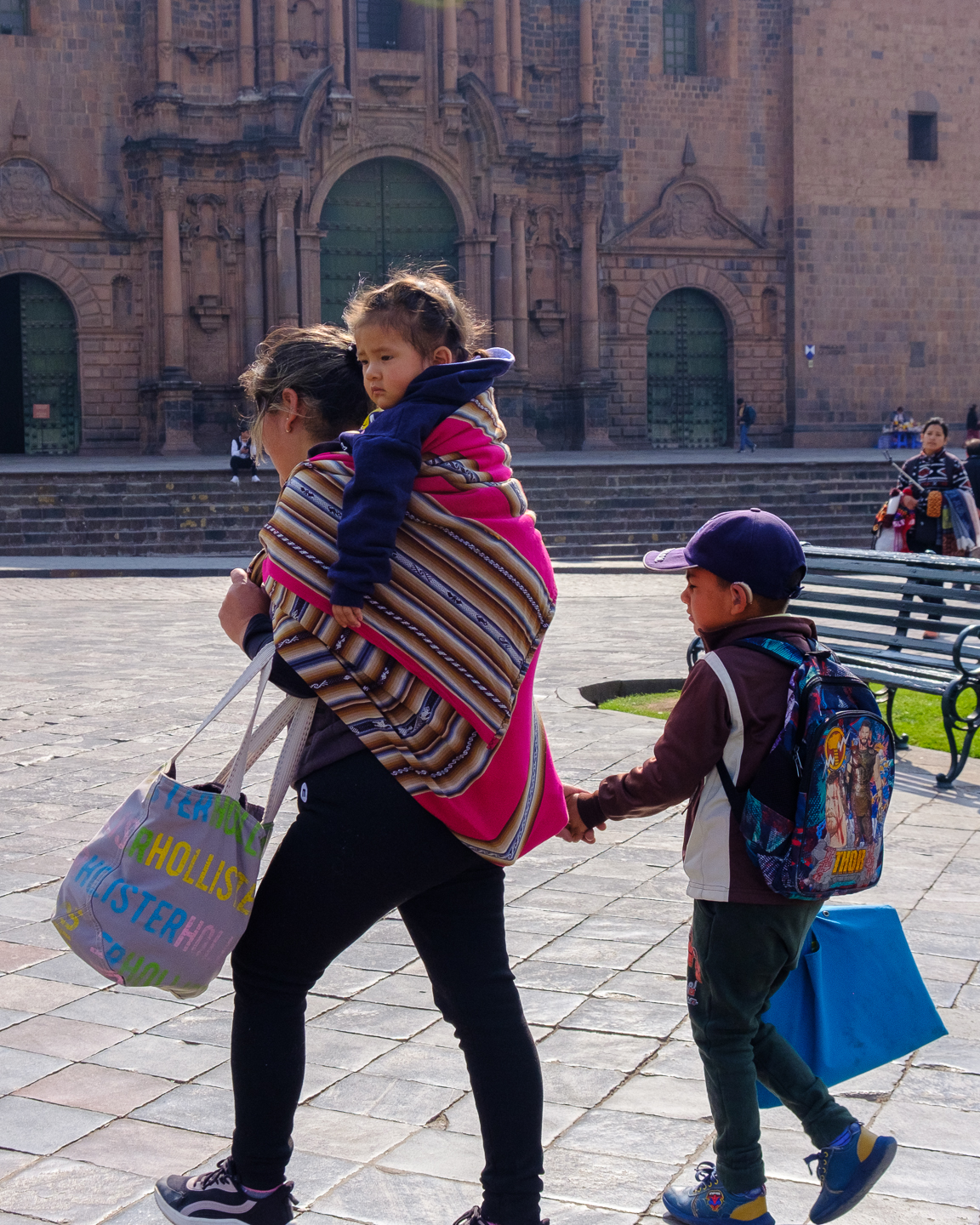
Street vendor serving this man his breakfast.
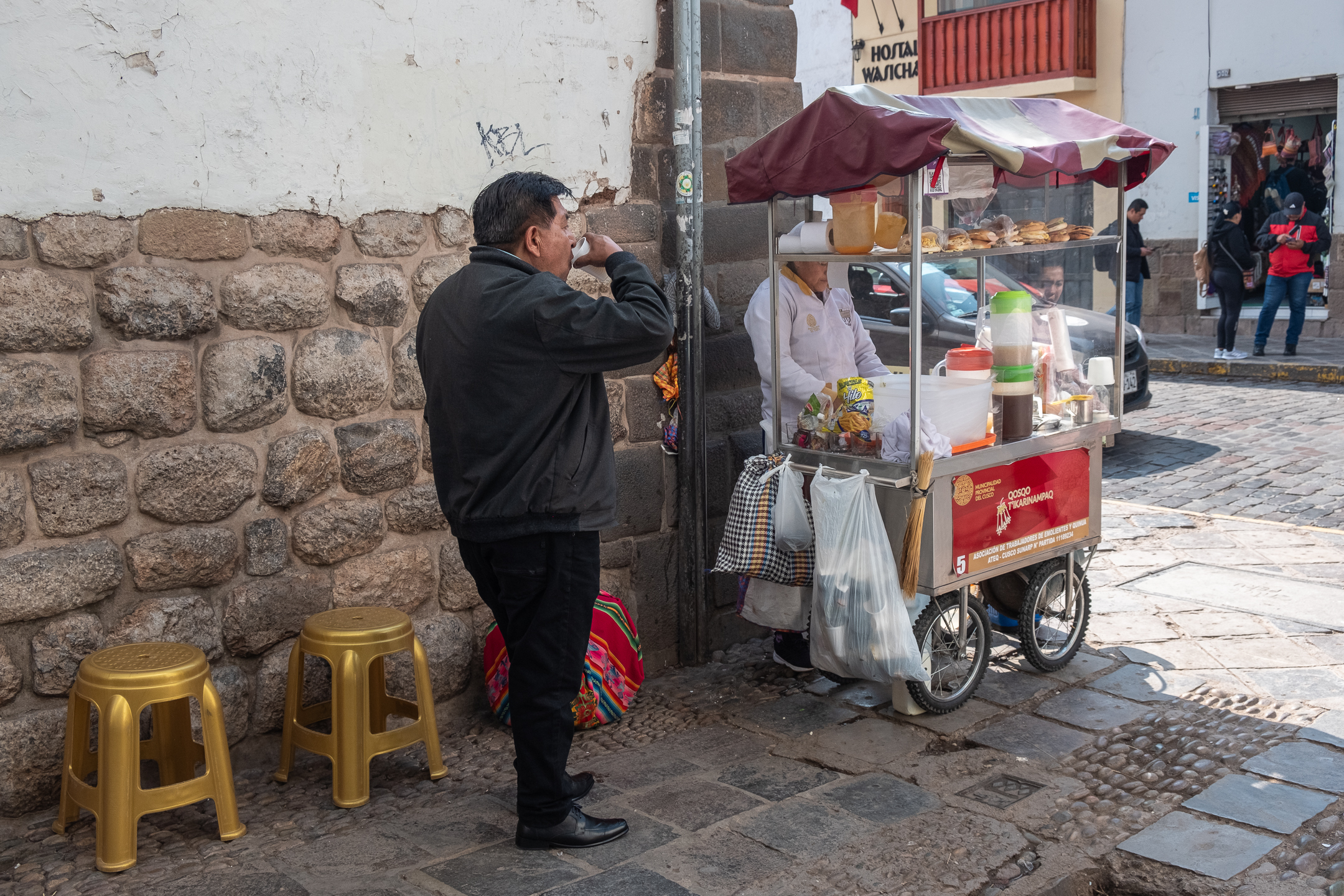
Wherever there’s a doorway or archway, I always like to see what I can capture with my camera!
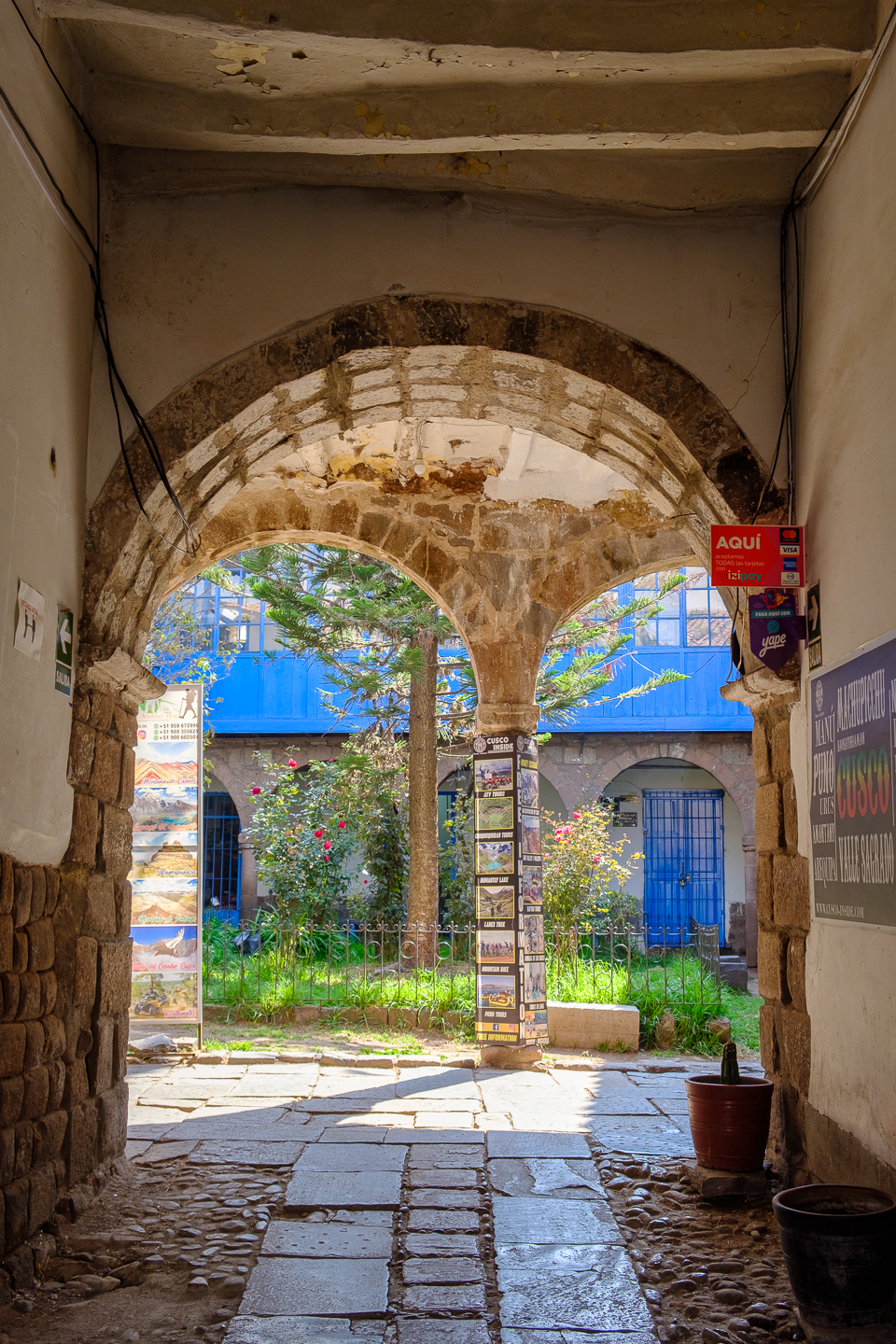
Incan architects knew how to cut and place stones so no mortar is needed and the buildings hold up even in earthquakes. Although these blocks separated, the temple remains.
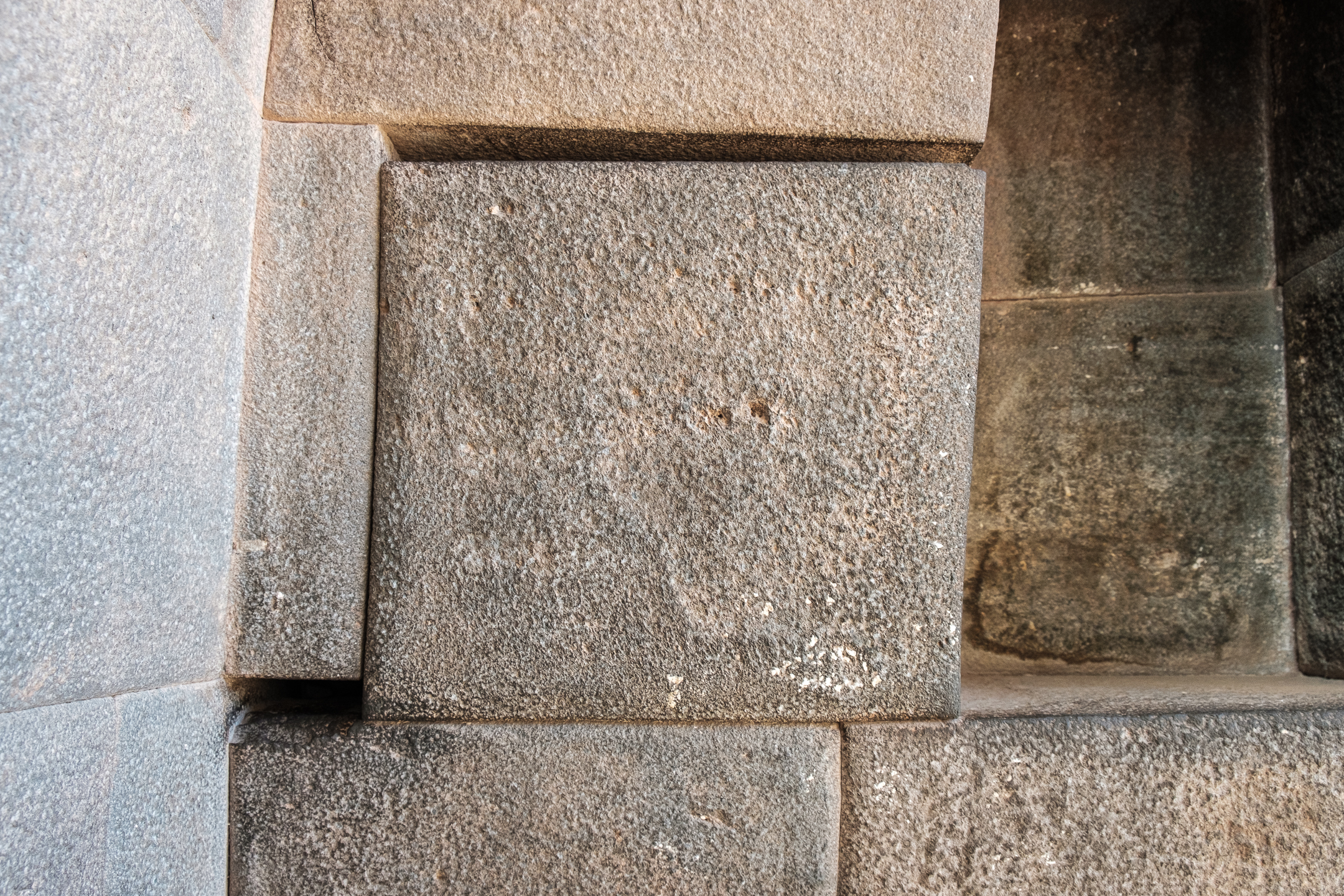
Leo told us about the Condor (representing the heavens), the Puma (middle world of earth), and the Snake (underworld). In the lawn outside the Sun Temple, these symbols are etched into the lawn.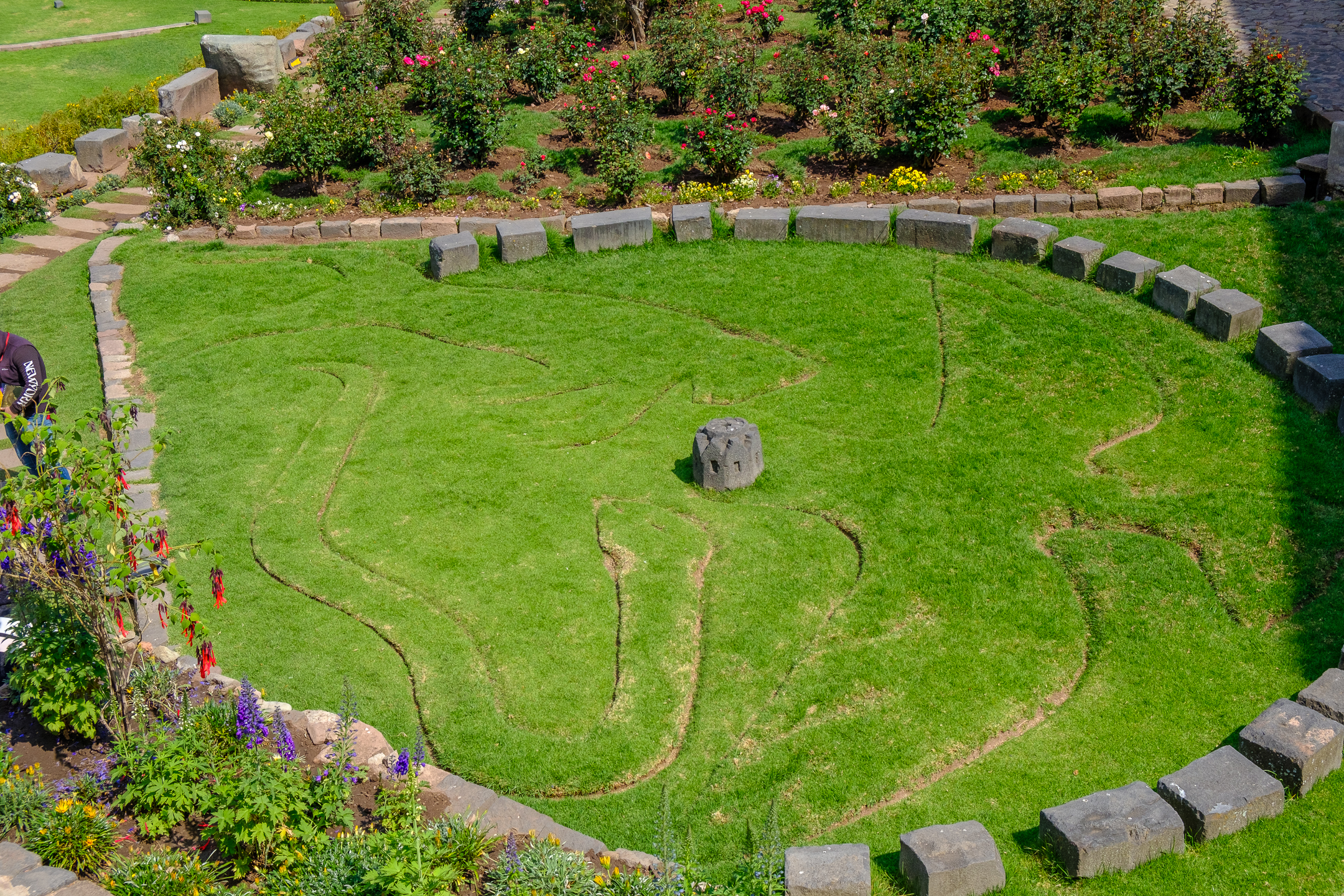
Outside the Sun Temple, now with Church of Santo Domingo on top of it, are three eras of stone: Pre-Inca, Inca, Spanish.
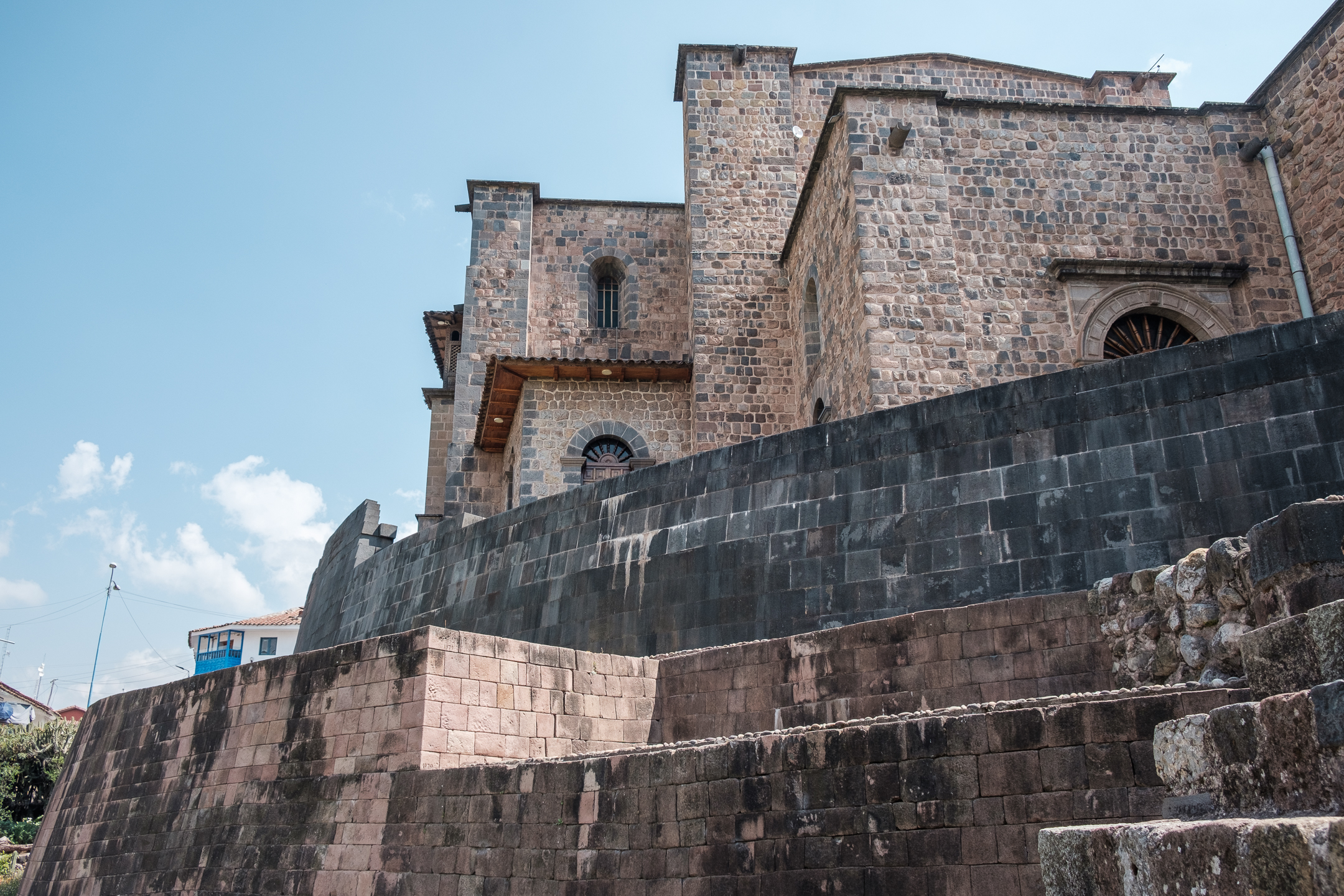
In the gallery of the church, I saw this painting representing the center of the universe and all that flows from it.
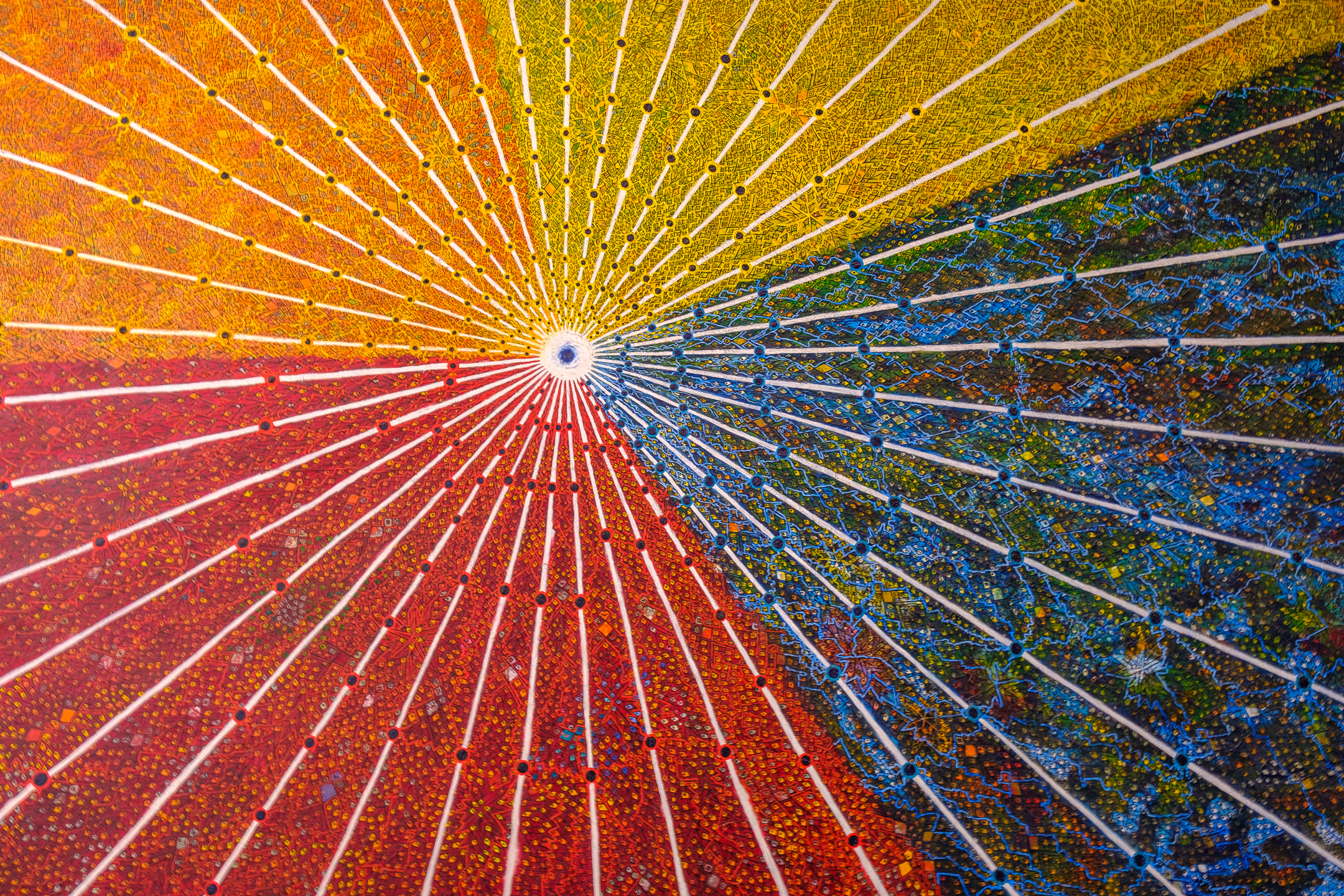
Spanish architecture – decorative columns.
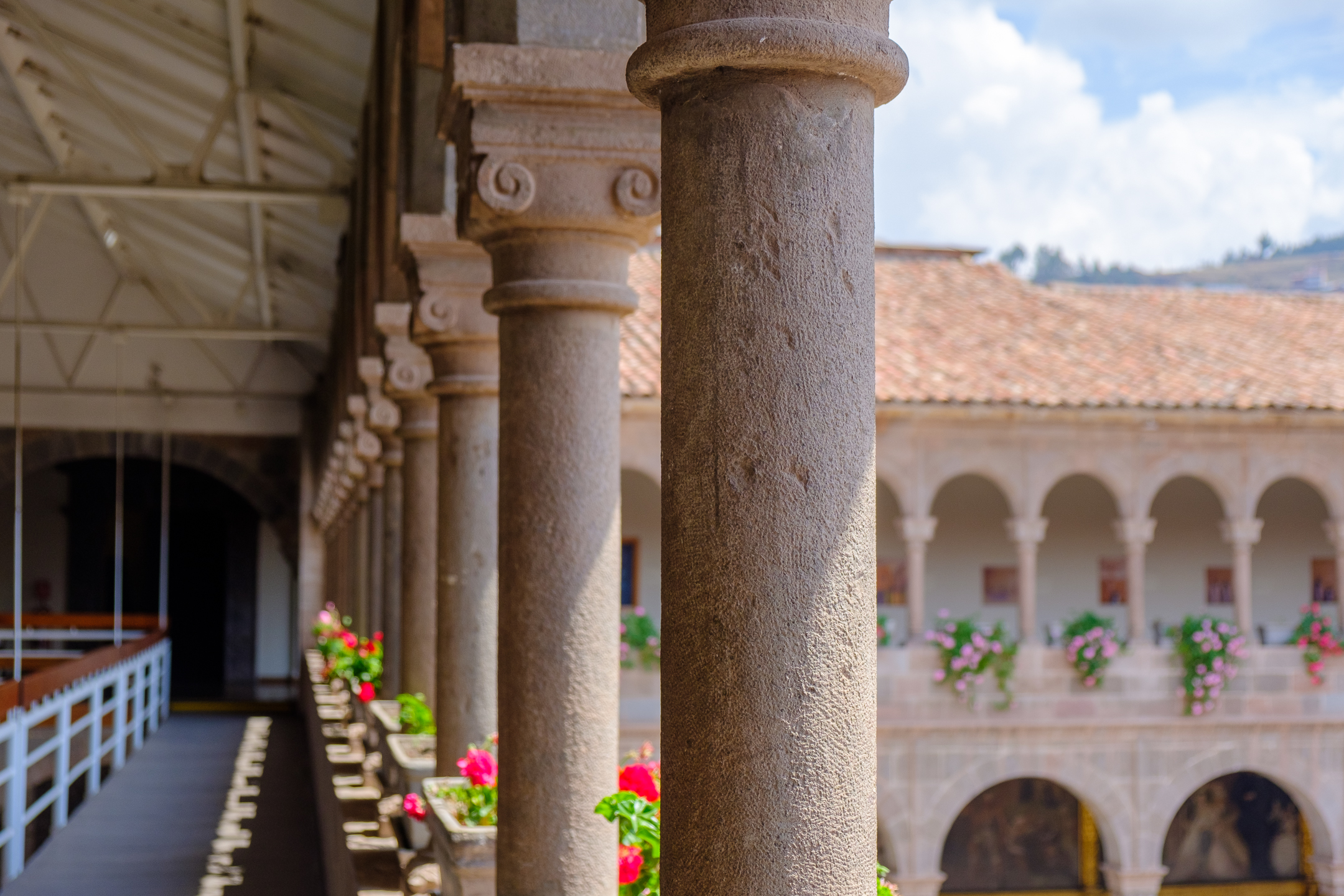
View of Cusco’s hills from the second floor of the church.

Cusco through the bell towers arches.
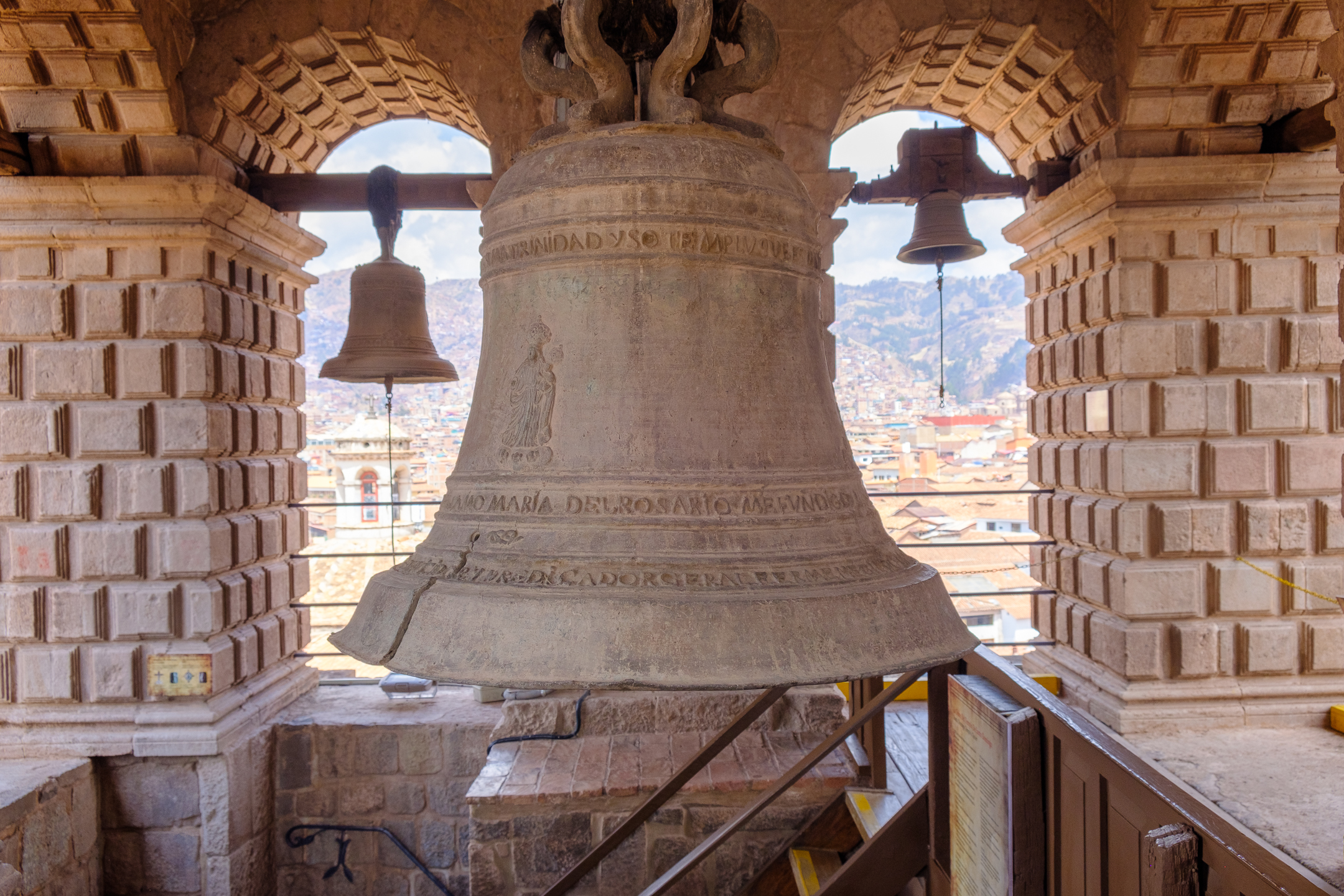
Another view of Cusco from the bell tower.
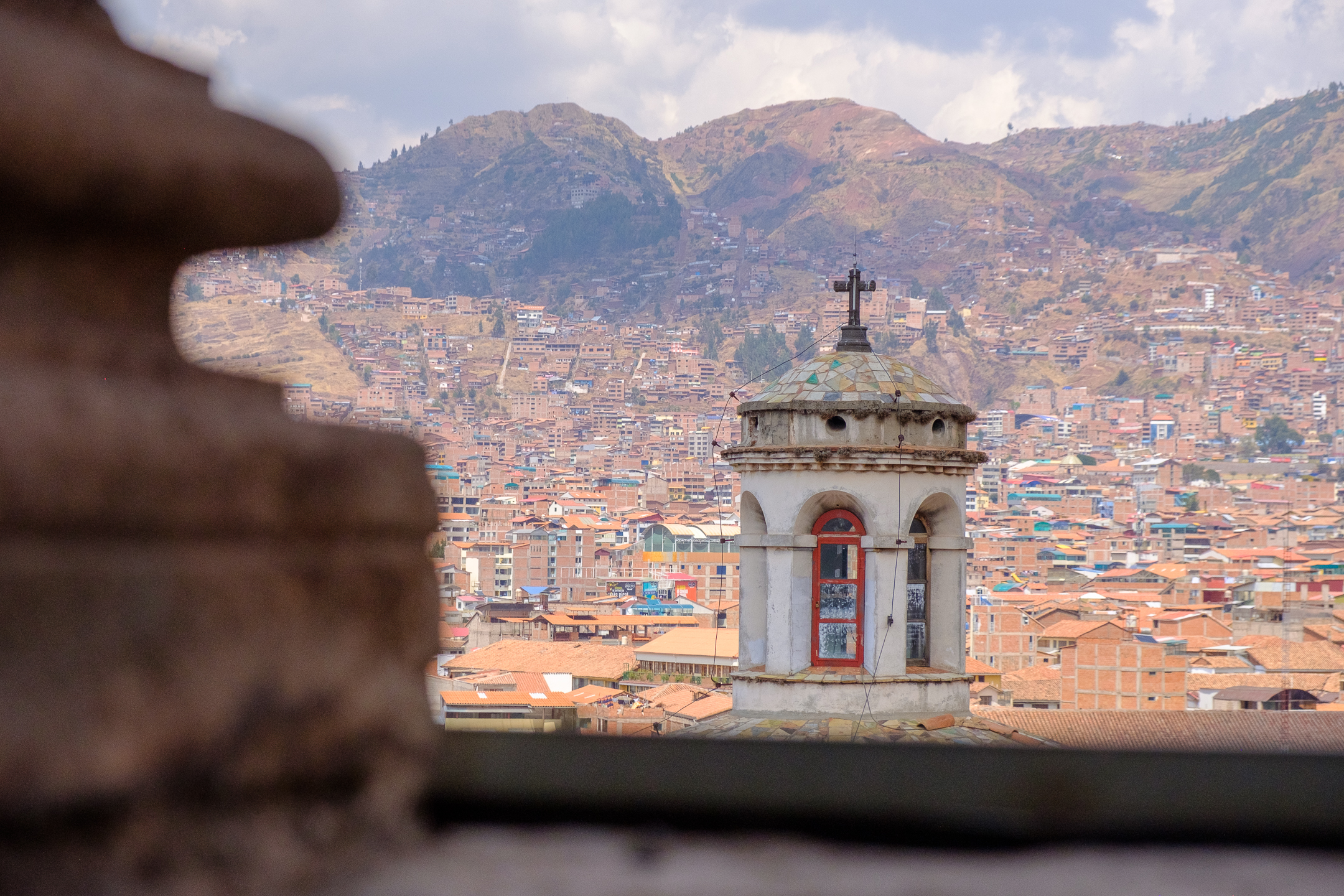
Quipu: Quipus were the main system employed by the Incas to record information. The knotted cords were used to record countable information. The colors, knots and the distances between the knots enabled those who used the quipus to identify the type of object or the characteristics of the population being recorded.
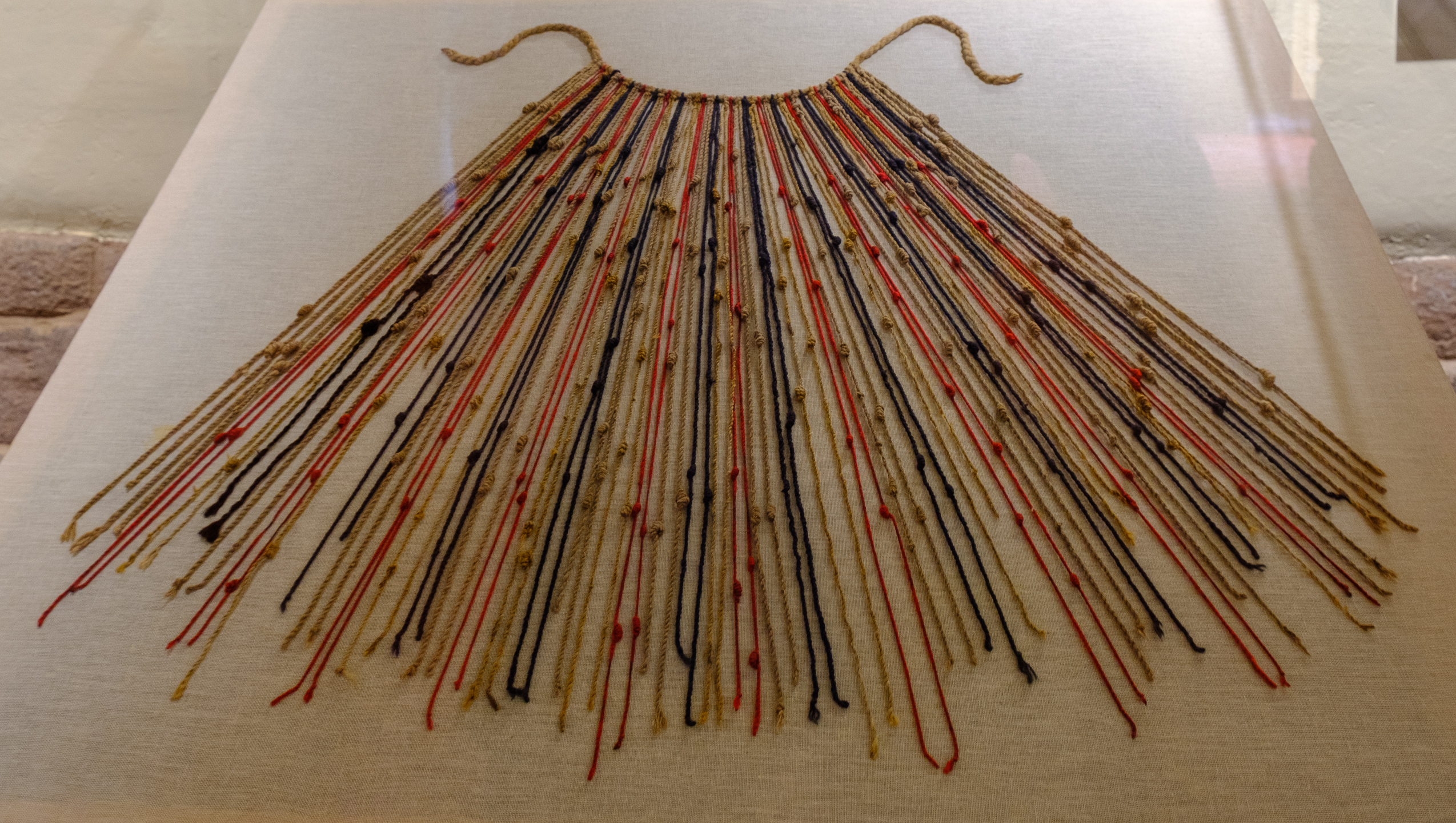
From the Martin Chambi exhibit in the Machu Picchu Museum – I love his use of Black & White and using an arch for framing. Martín Chambi Jiménez was a Peruvian photographer, originally from Puno, in southern Peru. He was one of the first major Indigenous Latin American photographers.
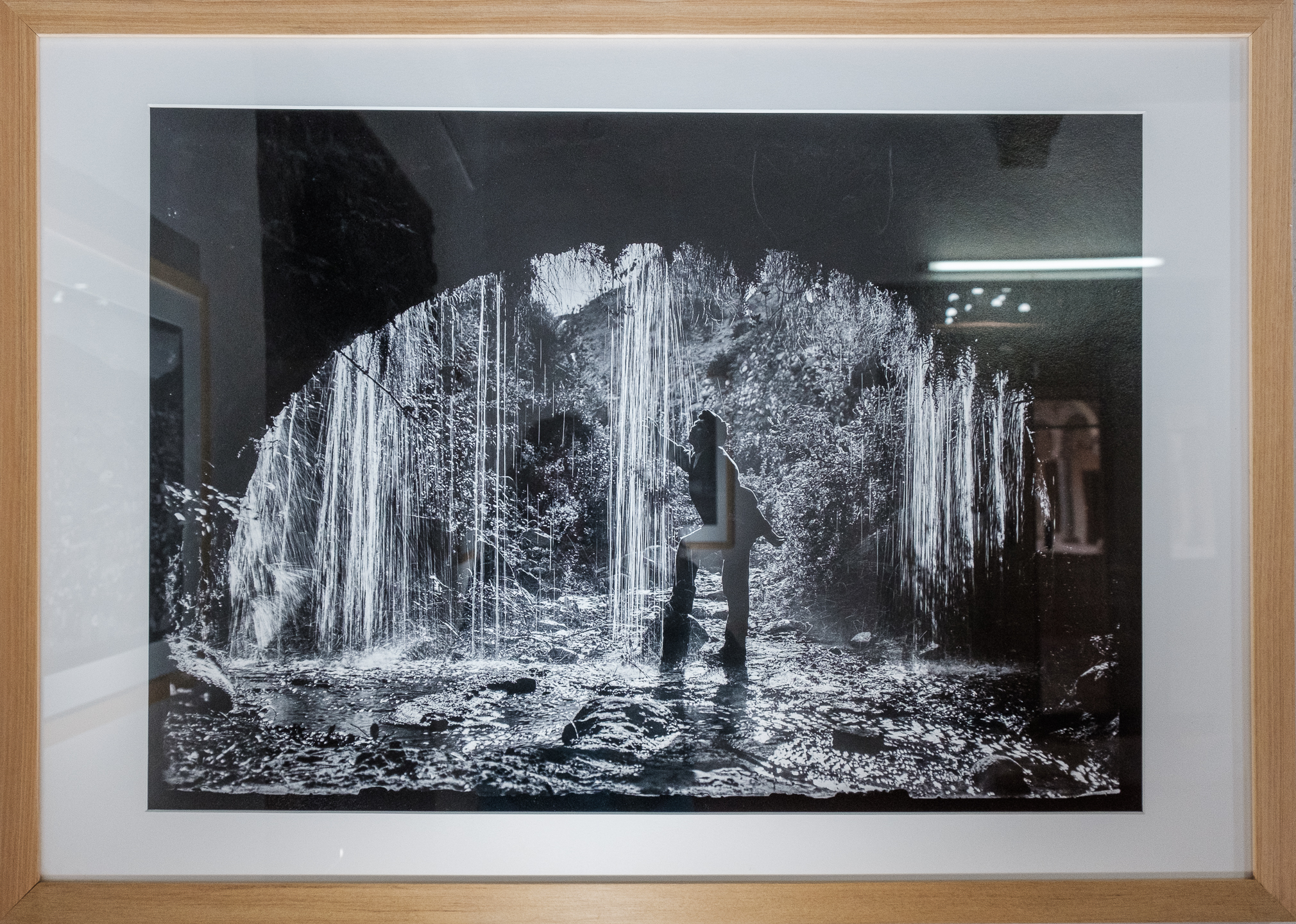
*Another “rule” is that rules are meant to be broken!
These pictures are so cool! You are so talented!
Thanks! I’m having fun learning!
Maybe someday I’ll sort and edit my Cusco photos from 2015. In the meantime yours are an inspiration to do it!
Ah, thanks! 🙂